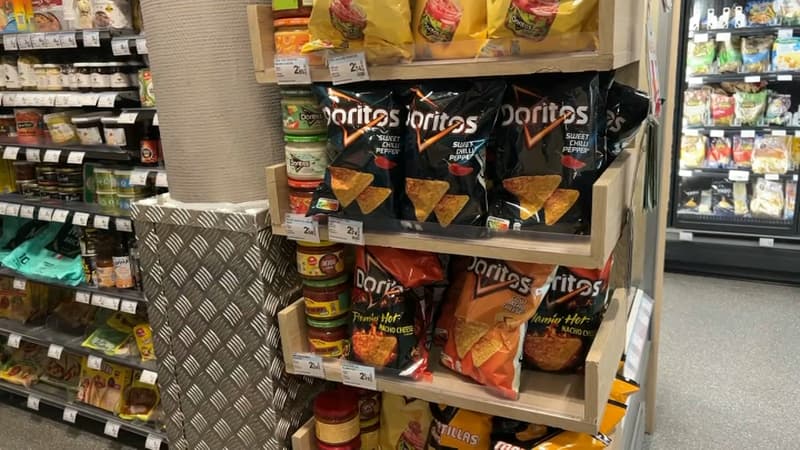A good start for new negotiations. Since Wednesday, consumer manufacturers have pledged to renegotiate the selling prices of some of their products downwards in the coming days.
But not all manufacturers will be affected, let alone all products available on the shelves. The representatives of the sector, received this Wednesday at the Ministry of Economy, gave the framework for their negotiations and it is quite restrictive. In fact, they will only be the 75 most important manufacturers in the sector. Therefore, the most fragile SMEs leave, which as a whole had negotiated smaller increases in March (around 6%).
The main manufacturers of dairy products will not be affected either, in order to protect the purchase price of milk from breeders. Therefore, groups like Danone, Sodiaal (Entremont, Candia, Viva…) or Lactalis (Presidente, Galbani…) will not be part of it.
35 to 40 manufacturers should lower their prices
So who are these ultimately concerned agri-food giants? Among the 75 most important manufacturers in the sector, according to NielsenIQ, we can mention Unilever (Amora, Carte d’Or, Knorr, Maille…), Coca Cola, Nestlé (Nescafé, Maggi, Purina…), Ferrero (Nutella , Kinder…), Panzani, Barilla, Mars (M&M’s, Whiskas, Ben’s Original, Pedigree, Royal Canin…), Kellogg’s, Mondelez (Lu, Milka, Poulain…) or Pepsico (Lay’s…) , Fleury Michon, McCain or Avril (Lesieur, Puget…).
Together these groups represent 80% of the product references sold in supermarkets, excluding private label brands.
However, not all of its products will be affected by the price renegotiations. Indeed, other conditions have been established: it will be necessary for the products in question to have increased by at least 10% by the end of the March negotiations and for at least one of the raw materials that go into their composition to have decreased by 20%.
Many products excluded from renegotiations
In short, quite restrictive conditions that will exclude a large number of products. Starting with sugar. If this product has had a booming quarter in supermarkets (+14% according to INSEE), the price of the raw material has jumped 30% since March. Therefore, your final sale price should not move any time soon.
The same goes for sweet products in general. Let’s take the cakes and other cookies from the candy department. If the wheat and the vegetable oils that enter into its composition have fallen a lot since March (and even much earlier), the weight of the sugar that enters into its composition should exclude them from the products affected by the decreases. Same for sweets. Haribo, which approved increases of more than 10%, must not return to the negotiating table.
The 10% price increase restriction negotiated in March should once again exclude a certain number of manufacturers. Intermarché boss Thierry Cotillard sets an example in France Inter from a pasta producer who had negotiated average increases of 9% in March. Therefore, he is not affected by the new negotiation. Thus, the distributor estimates that there are actually between 35 and 40 large manufacturers that will renegotiate their prices.
First the oil and the eggs…
In general, those that do not use dairy products, little sugar and for which oil, wheat and eggs represent an important part of the raw materials used. Furthermore, even before the new round of negotiations, oil had already started to fall.
“Between negotiation and implementation, there’s a bit of administrative time on the one hand, and sometimes inventory on the other. When you’ve bought a bit more expensive stock, you sell it. And then, as soon as you can, trade it in. But it is relatively fast. The movement is already underway, up to 20% cheaper, “he says.
Eggs, which have also risen sharply over the past year, will begin to decline in the coming days. This is not the case for poultry, which were severely affected by bird flu and for which it will take longer to rebuild farms.
… then chips and pet food
Other products that should also fall significantly after the negotiations: industrial pastries as well as appetizer products and other salty snacks. The wheat and vegetable oils that are part of its composition have been reduced considerably, while the sale prices have increased considerably in recent months. The French fries category, for example, has been one of the most inflationary for three months with an increase of 10% according to INSEE.
The same goes for animal feed products. Price increases in the category had been stronger in the last round of negotiations. In question: the sharp rise in the price of energy and inputs for croquettes (poultry, starch, cereals, animal fat, etc.). But once again, excluding poultry, most commodities and energy are down, which should justify a downward renegotiation of cat and dog food.
A drop yes, but how big?
It remains to be seen what the amount of the reduction will be. It shouldn’t be spectacular at least at first. In pasta, for example, the head of Intermarché estimates it on average at 12%. Enough to erase the increase negotiated in March but not the one registered in all of 2022. Production costs and in particular wages increased in the period.
These first discounts should take place in the next few days for already renegotiated products such as eggs and oil. But for those in their industrial big forties, it will take a few more weeks.
Source: BFM TV


